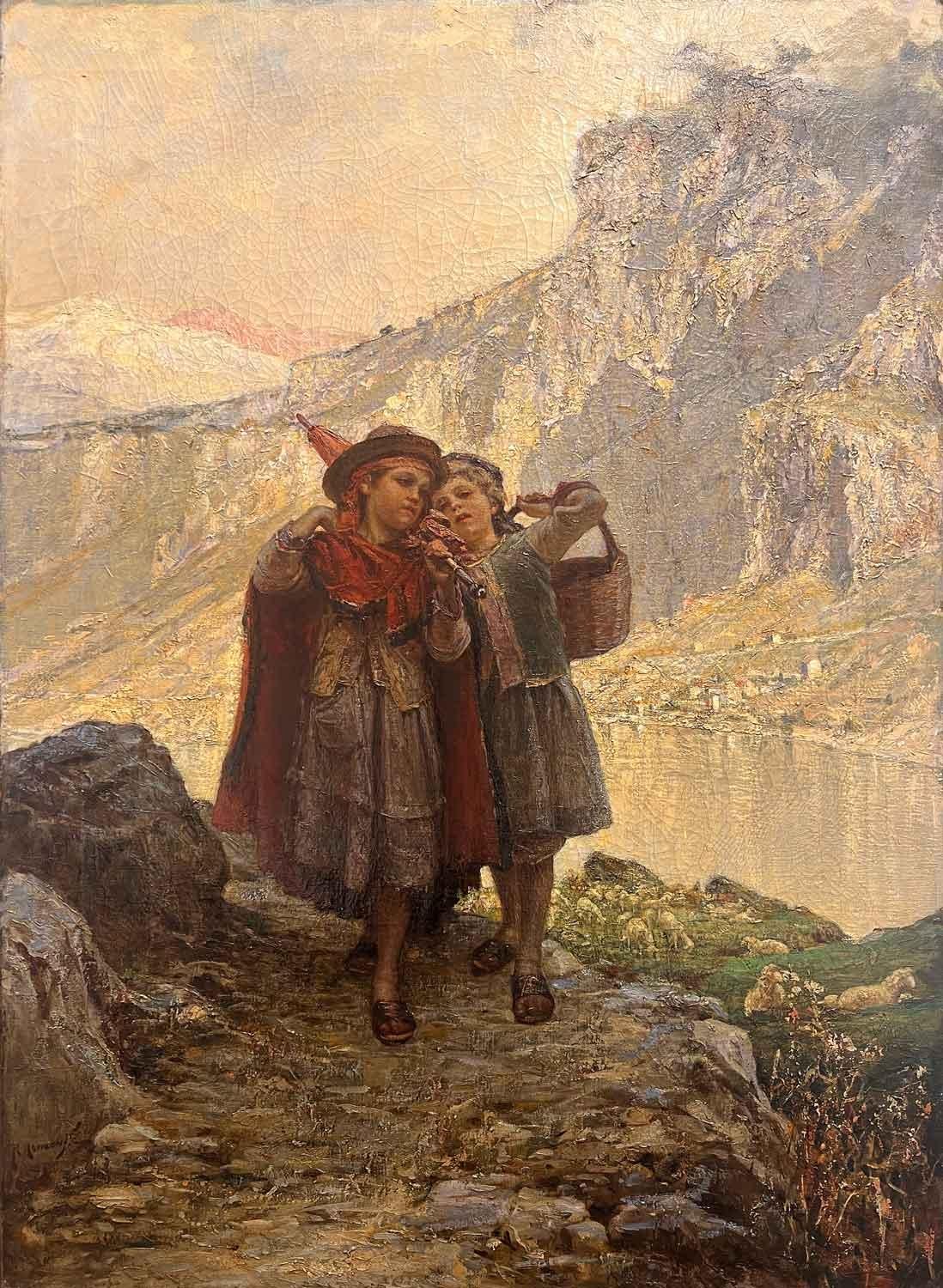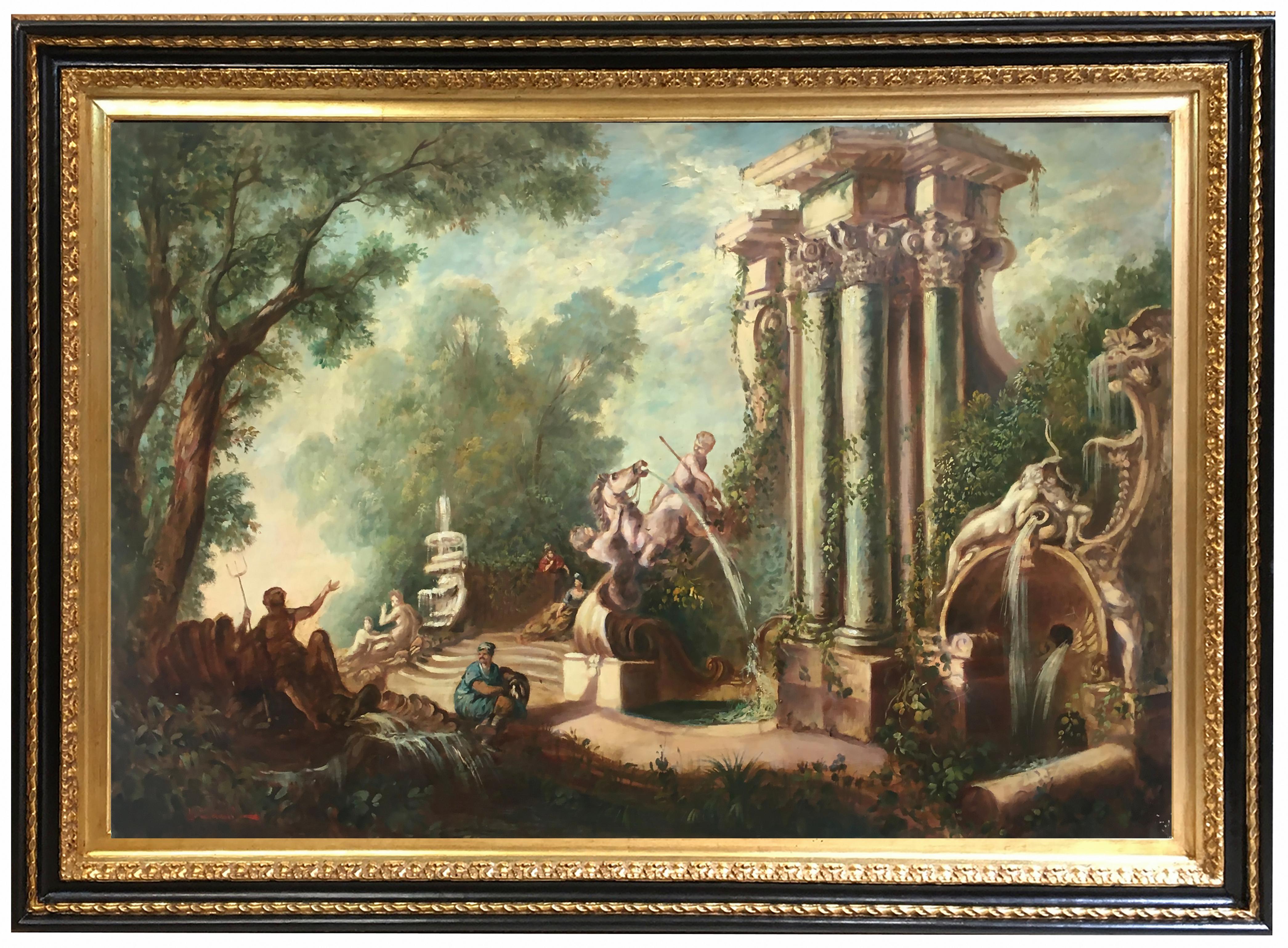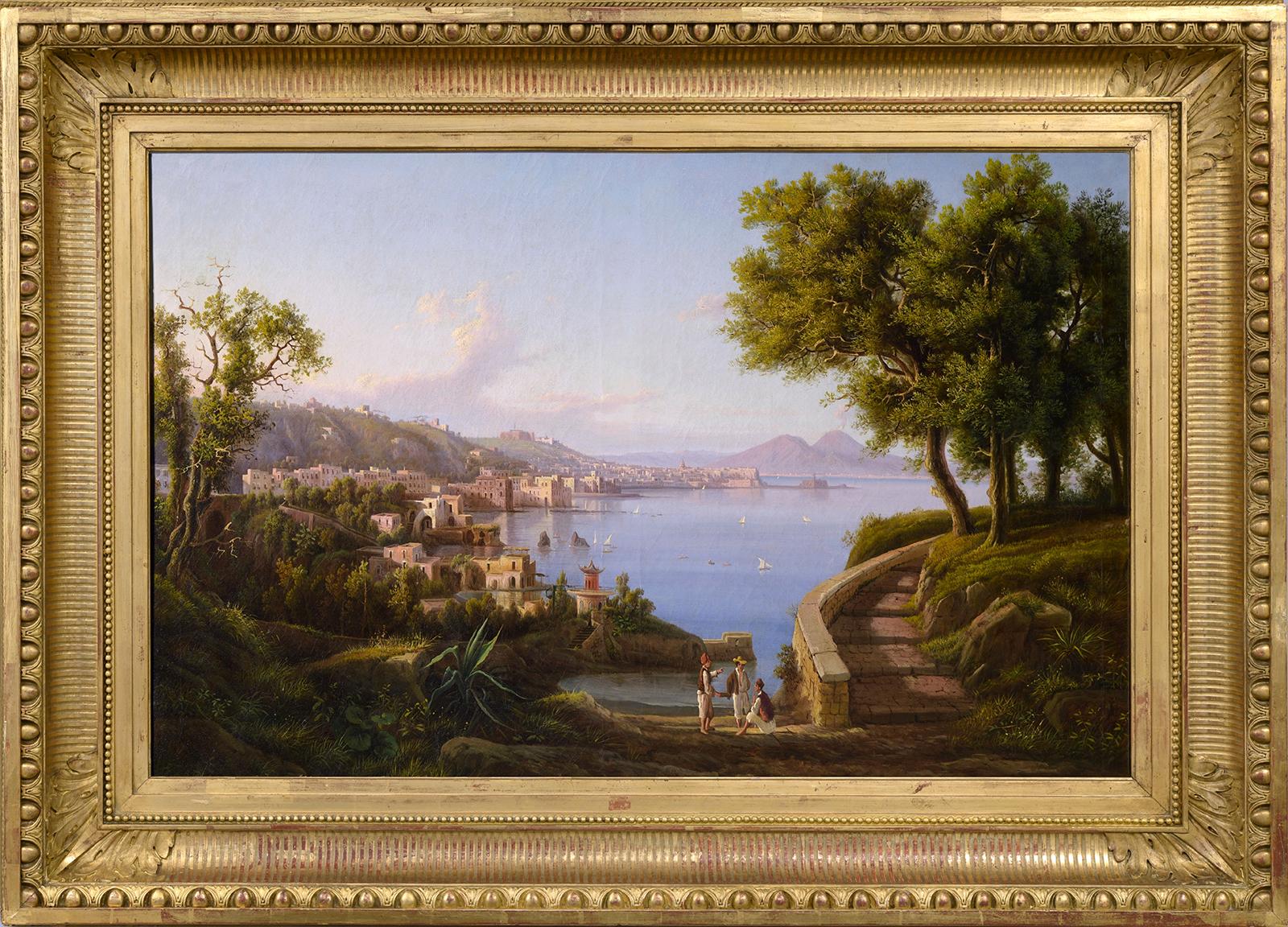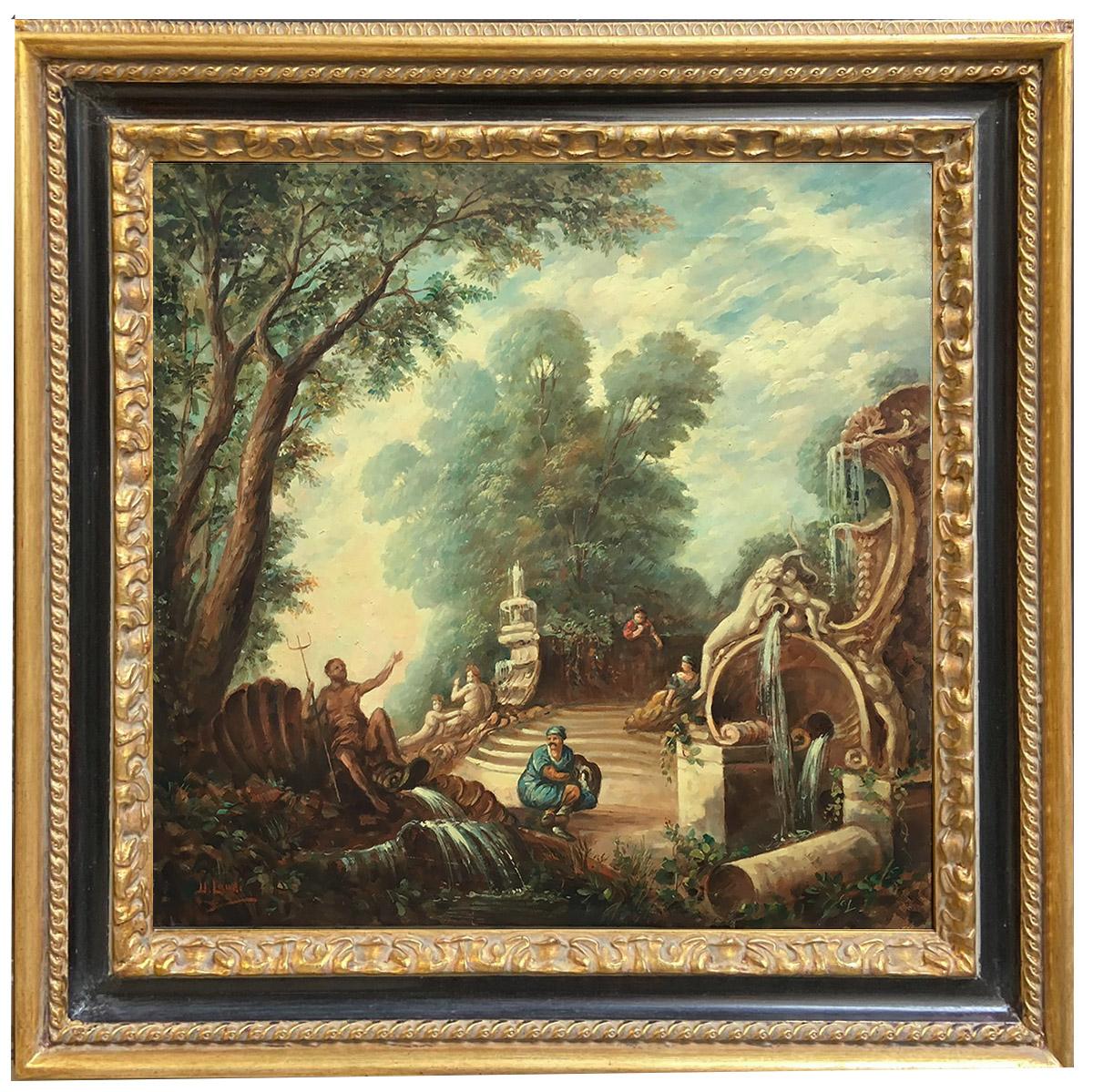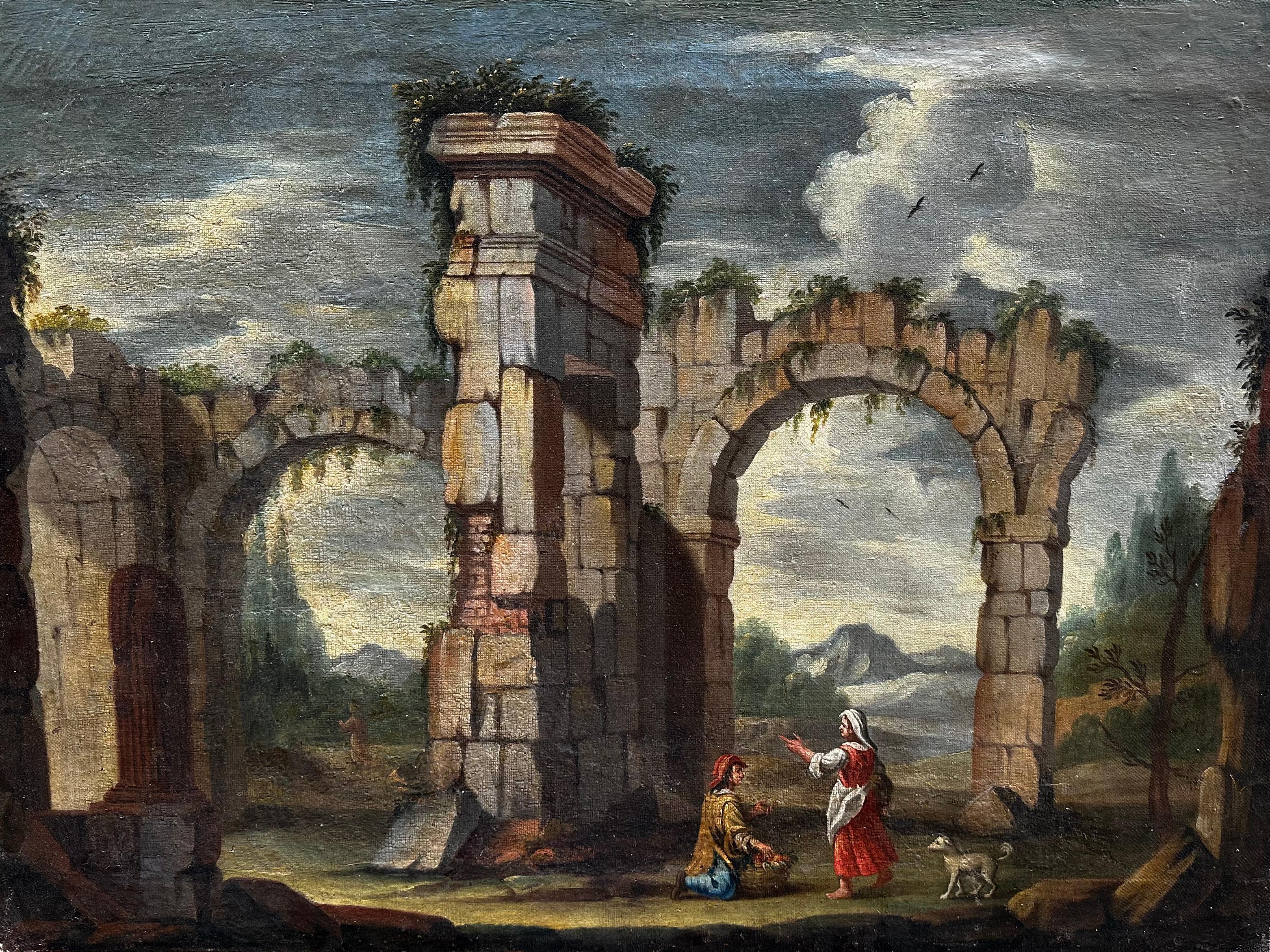Items Similar to Saint Jacques at Clavijo battle
Want more images or videos?
Request additional images or videos from the seller
1 of 8
Belisario CorenzioSaint Jacques at Clavijo battlecirca 1600
circa 1600
About the Item
Belisario CORENZIO and his workshop
(Cyparisse, 1558 – Naples, 1646)
Saint Jacques bully at the battle of Clavijo
H. 120 cm; L. 98 cm
Around 1600
This fiery and colorful Mannerist painting is the work of an artist of the Neapolitan school, with a particularly violent and sulphurous existence, notably influenced by The Horseman of Arpin and Tintoretto. Born in Greece, Corenzio went to Naples around the age of 12, but it was in Venice where he seems to have received his real training, spending five years in Tintoretto's workshop. Within his considerable production, his first referenced works date from 1590; These are frescoes, which represent most of his corpus, adorning a large number of Neapolitan churches but also private palaces. Altarpieces, on the other hand, are relatively rare at Corenzio, as are oil paintings, which are clearly less profitable than large fresco works using more expeditious processes. This is because our artist was extremely greedy for profit. Initially supported by rich local merchants, but also thanks to his skill and his power of work, Corenzio quickly achieved a hegemonic position in the Neapolitan artistic environment, but, jealous, envious and sneaky, he could not stand the glory of others and regarded all other painters as enemies. He managed to come to an agreement with Giuseppe Ribera (the Spaniard being, like him, a Neapolitan by adoption), then first painter to the viceroy, and with Giovanni Battista Caracciolo (1578-1635) to form a sort of mafia triumvirate on the artistic community of Naples, exercising a merciless dictatorship, using all the baseness and threats towards the painters who could compete with them, in particular with those coming from outside. Among the best known who suffered from these persecutions (of which Corenzio was in fact the main organizer), there was first Annibal Carracci in 1609, then, around 1630, the Cavalier d'Arpin, Guido Reni, Le Dominiquin and Giovanni Lanfranco, all of whom left Naples in panic, Domenichino probably dying of poisoning. Corenzio died, according to several sources, by falling from a scaffolding. Our work is one of the few oil paintings by Corenzio to have survived. The art historian Luigi Lanzi wrote in the 18th century: “He painted very little in oil, although he had a lot of merit in terms of the union and strength of the colors. He was a good imitator of Tintoretto when he took the trouble to work diligently; but he more frequently had a manner consistent with that of the Chevalier d’Arpino…”. Endowed with an abundant and bold imagination, painting quickly and energetically, Corenzio is indeed close to Tintoretto, particularly in his ease in composing rather confusing scenes with numerous characters, with sophisticated and theatrical poses, characteristic of mannerism. But its borrowings from the stylistic repertoire of the Roman mannerist, Giuseppe Cesari, known as the Cavalier d'Arpin (1568-1640) are even more striking, particularly in our painting, with for example the representation of horses with strong necks, generous croup and bent position. anteriors (even if Corenzio has his own way of drawing the eyes and ears), and the presence in the air of Saint-Jacques on horseback, like a Perseus coming to deliver Andromeda. Our painting could well be a modello, or rather a small replica of the work which was in the 19th century in the Royal Bourbon Museum at the Studi Palace (current National Archaeological Museum of Naples), as described in 1843 in the guide from the gallery of paintings: “Saint James of Galicia on horseback exterminating the Saracens - Table of merit for the well-drawn and grouped composition, and for the lively and cheerful coloring”, an oil on wood measuring 12 x 8.5 feet (i.e. approximately 3.70 x 2.60 m). Charles Blanc gave it a slightly different title (Saint James of Galicia putting the Saracens to flight) and described it thus: “Mounted on a white horse, the saint pursues, sword in hand, the infidel riders; his coat floats behind his shoulders, his attitude is full of pride and enthusiasm. In the background of the painting, which is painted in greenish tones, we see a routed army. A description that corresponds well to our composition. Clavijo is a legendary battle which opposed, on May 23, 844, the troops of King Ramire I of Asturias to the Moorish army of Abd al-Rahman II. The battle took place some 35 kilometers east of the monastery of San Millán de la Cogolla. The previous night, Saint James the Greater appears to Ramire in a dream, encourages him to take up arms the next day and assures him of his protection. During this fight, mounted on a sparkling white steed, the apostle lends a hand to his protégés, whom he leads to victory, and frees from the tribute the hundred virgins that the emir collected each year since the reign from Mauregat of Asturias. The iconography of this appearance of the Apostle is frequent, but is rarely found created by Italian painters. Ambrosius Benson in a triptych on the subject of the battle shows us a Saint James on the ground, trampling the bodies with turbaned heads with his horse's hooves. This representation is the most classic, it crosses the centuries and is found practically in every artist, depicting the saint among mortals. Contrary to this, Corenzio develops in our painting another point of view, that of the pure apparition, coming from the sky, isolated from earthlings by its levitation on a cloud, ready to plunge on the Moors with its flaming sword. All these particularities seem to be real exceptions in the representation of this battle, where the divine is not so much an actor, but a psychological support. We thank Professor Nicola Spinosa for her insight into the attribution to Bélisario Corenzio and his workshop.
- Creator:Belisario Corenzio (1558 - 1646, Italian, Spanish, Greek)
- Creation Year:circa 1600
- Dimensions:Height: 47.25 in (120 cm)Width: 38.59 in (98 cm)
- Medium:
- Movement & Style:
- Period:
- Condition:Perfect condition. Cleaned.
- Gallery Location:BELEYMAS, FR
- Reference Number:1stDibs: LU1860213506912
About the Seller
No Reviews Yet
Vetted Seller
These experienced sellers undergo a comprehensive evaluation by our team of in-house experts.
Established in 2011
1stDibs seller since 2022
- ShippingRetrieving quote...Ships From: BELEYMAS, France
- Return PolicyThis item cannot be returned.
More From This SellerView All
- Napoly bay with the VesuviusLocated in BELEYMAS, FRAttributed to Carl-Wilhelm GÖTZLOFF (Dresden, 1799 -Naples, 1866) The Bay of Naples and Vesuvius from the Pausilippe Oil on canvas H. 66 cm; L. 98.5 cm Trained in Dresden by Caspar ...Category
1830s Italian School Figurative Paintings
MaterialsOil, Canvas
- Circle of Xavier Leprince - Picnic in the forestLocated in BELEYMAS, FRCircle of Xavier LEPRINCE (Paris 1799 - Nice 1826) Picnic in the forest Oil on canvas H. 36 cm; L. 26 cm This picnic scene places us around 1825/35, which makes it a rare representa...Category
1820s French School Figurative Paintings
MaterialsCanvas, Oil
- Lake Albano, Castel Gandolfo ItalyBy Antoine Ponthus-CinierLocated in BELEYMAS, FRAntoine-Claude PONTHUS-CINIER (Lyon, 1812 - Lyon, 1885) Lake Albano, Castel Gandolfo and the Roman countryside Oil on canvas mounted on cardboard H. 38 cm; L. 55 cm Signed lower left Ponthus-Cinier belongs to what could be defined as the third (and so to speak last) generation of neo-classical or historical landscape painters, born in the years 1810/1820, like Félix Lanoüe, Achille Bénouville...Category
1840s French School Figurative Paintings
MaterialsCanvas, Oil
- François-Edme Ricois (1795-1881) View of Châteaudun castle and city in FranceLocated in BELEYMAS, FRFrançois-Edme RICOIS (Courtalain, 1795 - Mareil-Marly, 1881) View of Châteaudun Oil on canvas H. 65 cm; W. 98 cm Signed and dated lower center 1860 François-Edme Ricois although bor...Category
1840s French School Figurative Paintings
MaterialsCanvas, Oil
- Charles Merme (1818-1869) The blessing of Coureau de Groix in Larmor BrittanyLocated in BELEYMAS, FRCharles MERMÉ (Cherbourg 1818 - Lorient 1869) The blessing of Coureau de Groix at Larmor Oil on canvas H. 60 cm; W. 100 cm Signed and dated lower left, 1...Category
1860s French School Figurative Paintings
MaterialsCanvas, Oil
- View taken in the Park of Saint-Cloud near ParisLocated in BELEYMAS, FRAlexandre-Hyacinthe DUNOUY (Paris, 1757 – Jouy en Josas, 1841) View taken in the park of Saint-Cloud Oil on paper mounted on canvas H. 31.5 cm; L. 24 cm Around 1820 Provenance: -Per...Category
1810s French School Figurative Paintings
MaterialsCanvas, Oil
You May Also Like
- Shepherdesses from LombardyLocated in Roma, RMArtist: Raffaele Armenise oil on canvas, 102 x 74 cm signed lower left "R. Armenise" Exhibition: Promotrice di Belle Arti in Genoa 1907, p. 30, n 244 Influenced by the realism of th...Category
19th Century Italian School Figurative Paintings
MaterialsCanvas, Oil
- CAPRICCI LANDESCAPE -Roman School - Italian Oil on Canvas PaintingBy Vittorio LandiLocated in Napoli, ITLandscape - Vittorio Landi Italia 2018 - Oil on canvas cm. 80 x 120. In this wonderful oil on canvas the painter draws inspiration from Architectural Capricci, a pictorial genre o...Category
Early 2000s Italian School Landscape Paintings
MaterialsOil, Canvas
- CAPRICCI LANDESCAPE -Roman School - Italian Oil on Canvas PaintingBy Vittorio LandiLocated in Napoli, ITLandscape - Vittorio Landi Italia 2014 - Oil on canvas cm. 80 x 80. In this wonderful oil on canvas the painter draws inspiration from Architectural Capricci, a pictorial genre of...Category
Early 2000s Italian School Landscape Paintings
MaterialsOil, Canvas
- ITALIAN GARDEN - Gianluca D'este- School Italian Oil on Canvas PaintingBy Gianluca D'EsteLocated in Napoli, ITLandscape - Gianluca D'Este Italia - Oil on canvas cm.70x100. This painting by G. D’Este is painted of architectural ruins, of feasts and ceremonies. In fact, this painting represent...Category
Early 2000s Italian School Landscape Paintings
MaterialsCanvas, Oil
- Architectural whimsy with Roman ruins, column and ancient arches.Located in Firenze, ITArchitectural whimsy with Roman ruins, column and ancient arches. Year 1718. Oil on Canvas. Original canvas. Roman school of the early 18th century. The painting is part of the seri...Category
Early 18th Century Italian School Landscape Paintings
MaterialsOil, Canvas
- Two people on a pathLocated in Genève, GEWork on cardboard Golden wooden frame 67.5 x 77.5 x 5 cmCategory
Early 20th Century Italian School Landscape Paintings
MaterialsOil
Recently Viewed
View AllMore Ways To Browse
Horseman Table
Horse Painting Fabian
Franz Van Sever
Helen Alton Sawyer
Le Lanne
Miniature Pinscher
Indian Fine Art
Womens H
Oil Painting Of Two Men
Vintage Toy Instrument
Sir Arthur Fell
Etienne 1974 Oil On Canvas
Female Sketch
Linda Adair
Christine Ilewski
Eternal Sunshine Of The Spotless Mind
Oil Paintings By Albert Goldman
Terracota Oil
